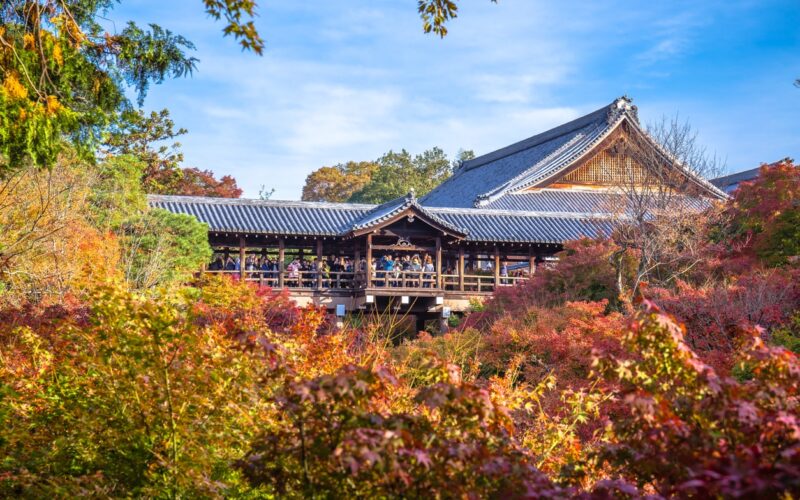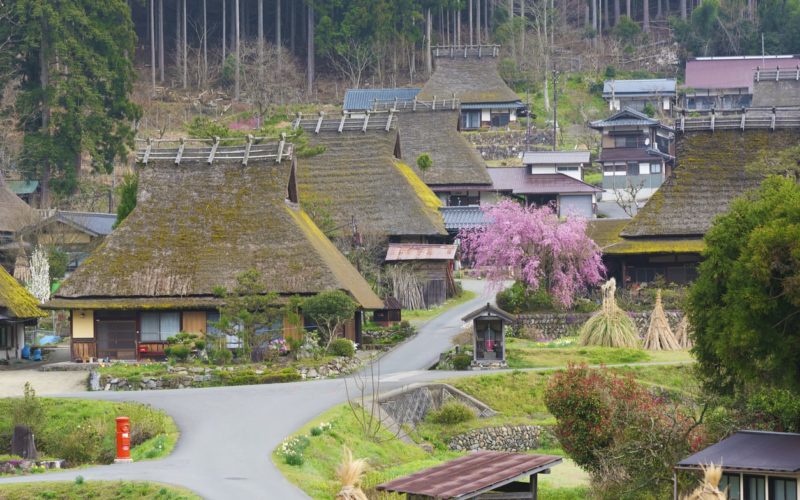Heian Shrine
Where to contemplate the meaning of life.
Heian Shrine is an impressively large shrine with lots to explore from beautiful gardens and ponds to stunning seasonal sakura trees and momiji (Japanese maple trees). Unlike most ancient shrines in Kyoto, Heian Shrine was built relatively recently in 1895 to commemorate the 1100th anniversary of Kyoto as the (former) capital city of Japan. The establishment itself is not too far from the Kyoto Imperial Palace.
A symbol of Kyoto
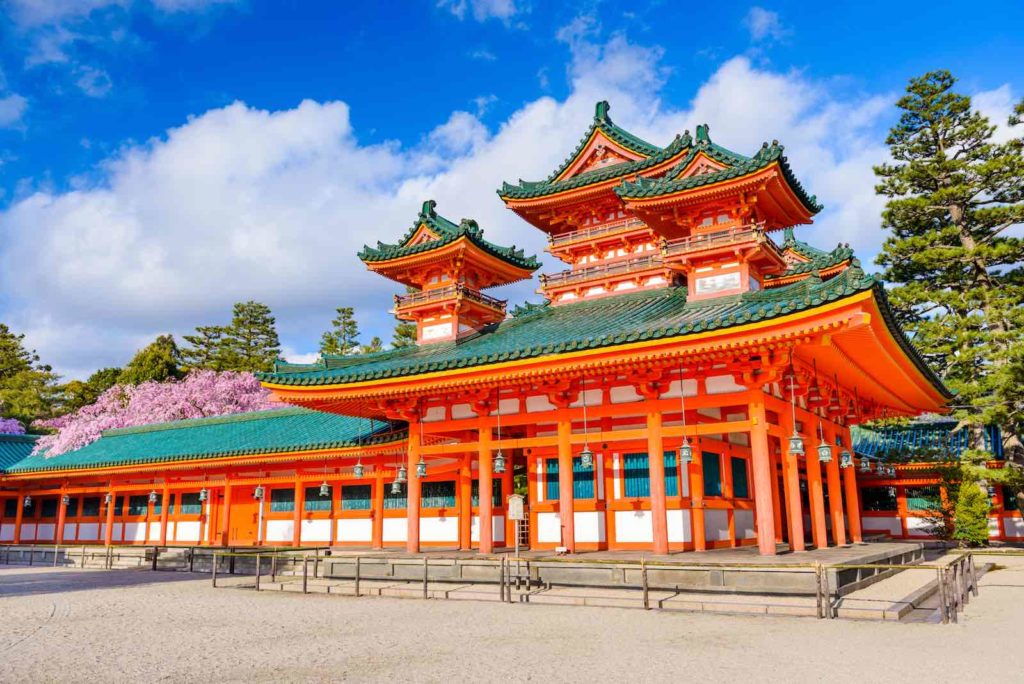
The shrine was built in 1895 — a relatively recent establishment.
Built in 1895, Heian Shrine is dedicated to Emperor Kammu and Emperor Komei — the first and last rulers of Kyoto when it was the capital. Because of its cultural significance, today it is recognized as Beppyo Jinja (the highest rank for shrines in terms of historical and cultural relevance) by the Association of Shinto Shrines. It is also listed as an important cultural property of Japan.
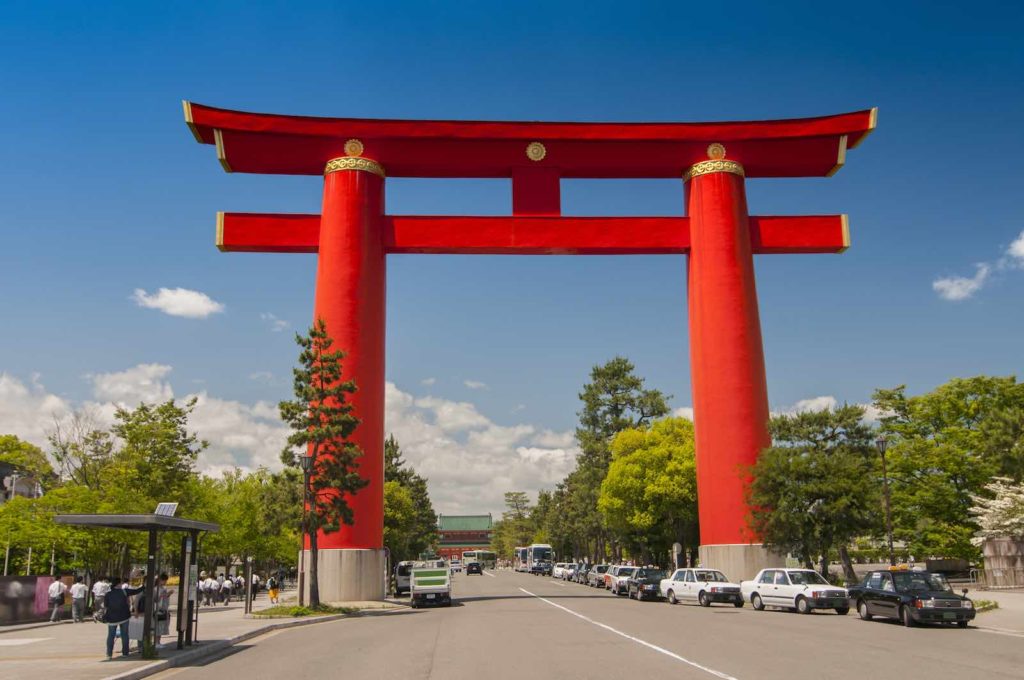
Red torii of Heian Shrine.
A massive torii (gateway) marks the road leading to the shrine. The torii is one of the largest and tallest gates in Japan at 24 meters high. Once on the grounds, the shrine’s main building is a smaller replica — a 5/8ths reproduction — of the original Imperial Palace of the Heian Period (794-1185 C.E.).
In 1976, the shrine was damaged in a fire but was rebuilt three years later with funds collected exclusively through donations. The shrine today remains important to the people of Kyoto because it’s a symbol of the city.
Things to see at Heian Shrine
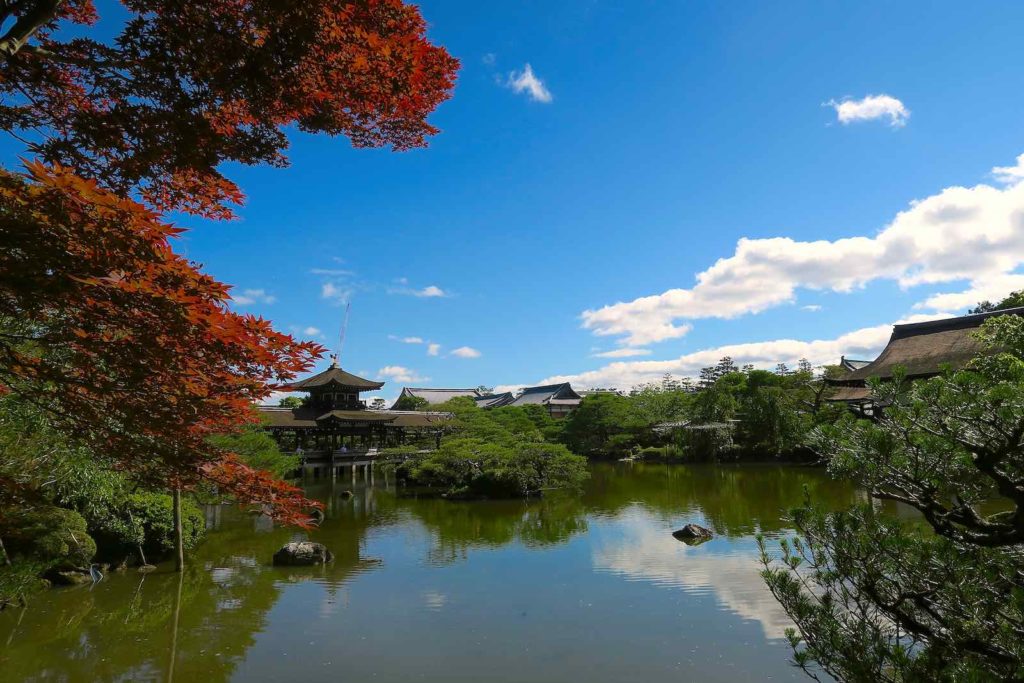
Photo by: Lucio Maurizi A small lake in the shrine and a great place to take photos!
Gracing the shrine are lush gardens located around the main buildings. Though this is the only area with an admission fee, it’s well worth it. The garden, spanning 33,000 square meters, is a splendor of overwhelming scenery, especially in spring, as it is famous for its trail of 300 cherry trees. As the temple courtyard and garden blossom, crowds come to celebrate hanami (cherry blossom viewing) — a tradition dating back to the Heian Era. In fall, they come back to admire the changing momiji leaves at the great shrine.
If you cannot catch it in April or November, head there in June when hundreds of irises and other flowers decorate the many ponds as well as the artificial lake inside the plot.
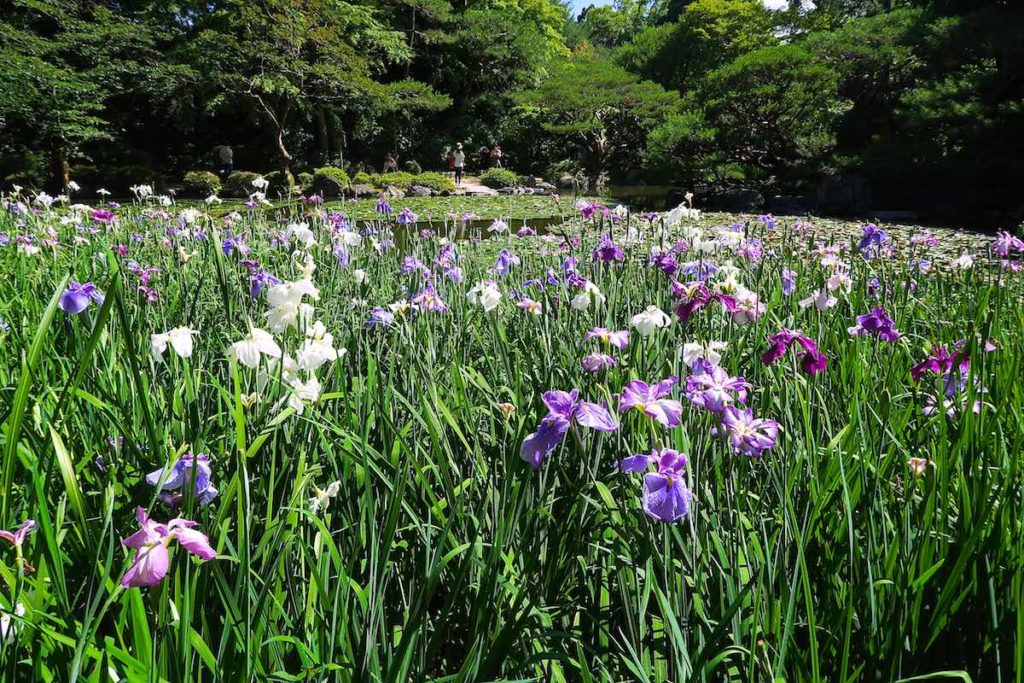
Photo by: Lucio Maurizi Looking for a place to relax?
Other events and nearby
Heian Shrine also hosts the Jidai Matsuri, a must-see festival dedicated to the history of Kyoto, every year on Oct. 22, the anniversary of the foundation of the old capital. For more details about the shrine, you can check their official website (Japanese).
Just west of the shrine, past Okazaki Park, you will find the National Museum of Modern Art of Kyoto, the Kyoto Municipal Museum of Art and Miyako Messe. The latter is a large convention center hosting permanent art exhibitions as well as areas dedicated to traditional crafts and architecture.
Of course, this shrine isn’t as well known as some of the others in Kyoto, but as you can see, it is just as beautiful!
Topics: autumn, Jidai matsuri, June, kyoto, momiji, October, shrines

